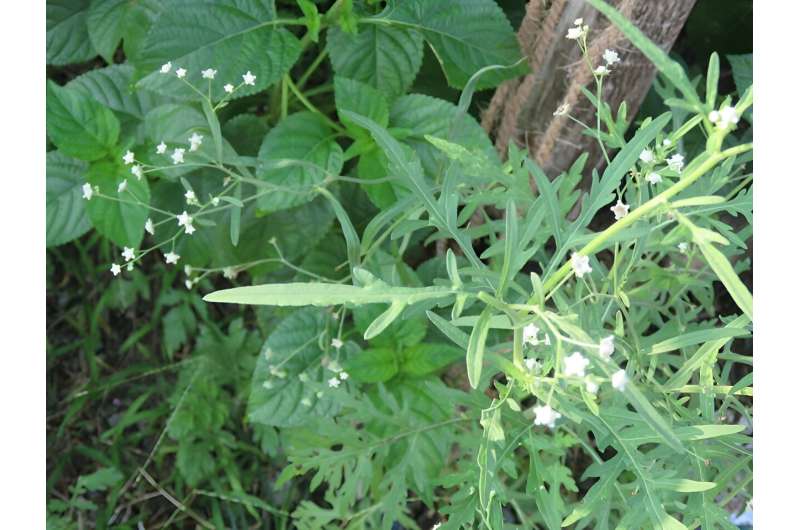
August 15, 2024 by David Bradley, Inderscience
Collected at: https://phys.org/news/2024-08-method-invasive-weed-congress-grass.html
The invasive North American plant species Parthenium hysterophorus, commonly known as Santa Maria feverfew and famine weed, is now present in Africa, Australia, and India, where it is locally known in English as congress grass.
According to new research published in the International Journal of Environment and Waste Management, congress grass has become a serious concern for food security, biodiversity, and public health in India and beyond.
The species is highly resilient and can quickly displace native plants and crops, threatening agricultural systems. It grows well even under poor climate and soil conditions in which crops usually struggle, and it is one of the most destructive weeds agriculture sees.
Not only is P. hysterophorus very resilient, it has allelopathic properties, which means it releases chemicals that suppress the growth of nearby plants. This gives it even more of an advantage over native plants and crop plants, allowing it to soak up water and nutrients and block sunlight from reaching seedlings.
This results in an even worse impact on biodiversity and ecosystems and on agricultural productivity where it is rife. In addition to ecological and agricultural problems, the plant is very allergenic and toxic to livestock.
The current research proposes a new approach to dealing with this weed. Instead of focusing on attempting to eradicate it, the team suggests that it might be harvested and composted so that any nutrient loss can be reincorporated into the farm. Moreover, proper composting will destroy the plant’s seeds and so reduce the risk of it spreading. The approach benefits from all the economic and ecological advantages of avoiding herbicide use.
Satish Kumar Ameta of Mewar University in Rajasthan, India, and colleagues suggest that governmental and non-governmental organizations have an important role to play in educating farmers about the potential of exploiting a weed in this way so that it might be adopted as a sustainable practice.
More information: Satish Kumar Ameta et al, Management of an obnoxious weed Parthenium hysterophorus through composting: a contrivance for recycling the nutrients, International Journal of Environment and Waste Management (2024). DOI: 10.1504/IJEWM.2024.139280
Journal information: International Journal of Environment and Waste Management

Leave a Reply